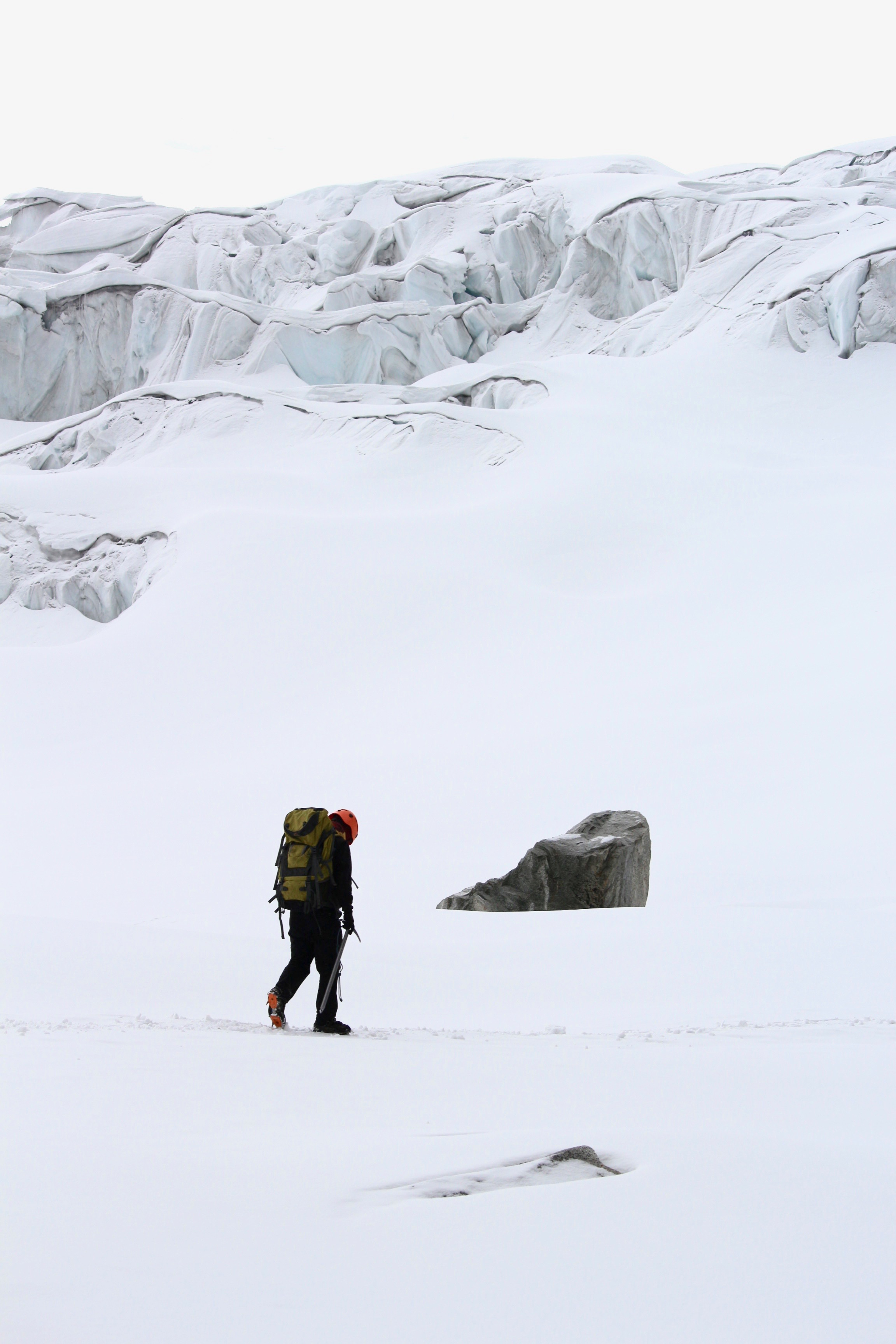The story of climate change is now well known: warming global temperatures are ravaging all corners of the planet. It is arriving in storms, drought and uncertainty — but for many places it is not yet fully here. In the Cordillera Blanca region of Peru, where over 70% of the worlds tropical glaciers reside, melt is happening, but at a glacial pace. Impending consequences will affect water resource management and threaten the region with glacial lake outburst floods (the last of which killed 20,000 people in 1970). With decades left before the full weight of climate change is felt, local residents are currently working to prepare and adapt to imagined possible futures.
By doing so, a group of men have been hired to climb up glacier peaks, some as high as 22,200’, in order to collect snow and ice samples and take photographs documenting melt patterns. The
catch: many of these men have very little experience in these types of dangerous conditions.
This photo highlights the role of the environmental interactions in the production of scientific knowledge. It provides a glimpse into the unimaginable and typically unknowable social worlds above 17,000’. The setting extends beyond thin air in cold places. These places are
endowed with the cultural valance of regional apus (glacier mountain gods) and the labor framed with moral imperatives: this work will save them from climate change. My interlocutors describe these places as beautiful, tranquil and silent — all while avalanches fall around them, ice bridges collapse, and crevasse fields move and shift in the early morning sunlight. The job demands a certain type of environmental literacy: an ability to forge paths across dangerous terrain (a skill mostly learned through friendships with other mountain workers, guides). This photo specifically captures the scale, isolation, and colossal environmental forms that give texture to this ethical labor practice. Just as well, it captures the mundane moments of a work commute. All of which are situated in environmental ideologies.

Commentary on Rachel Tanur's Works: Alaska Exit Glacier